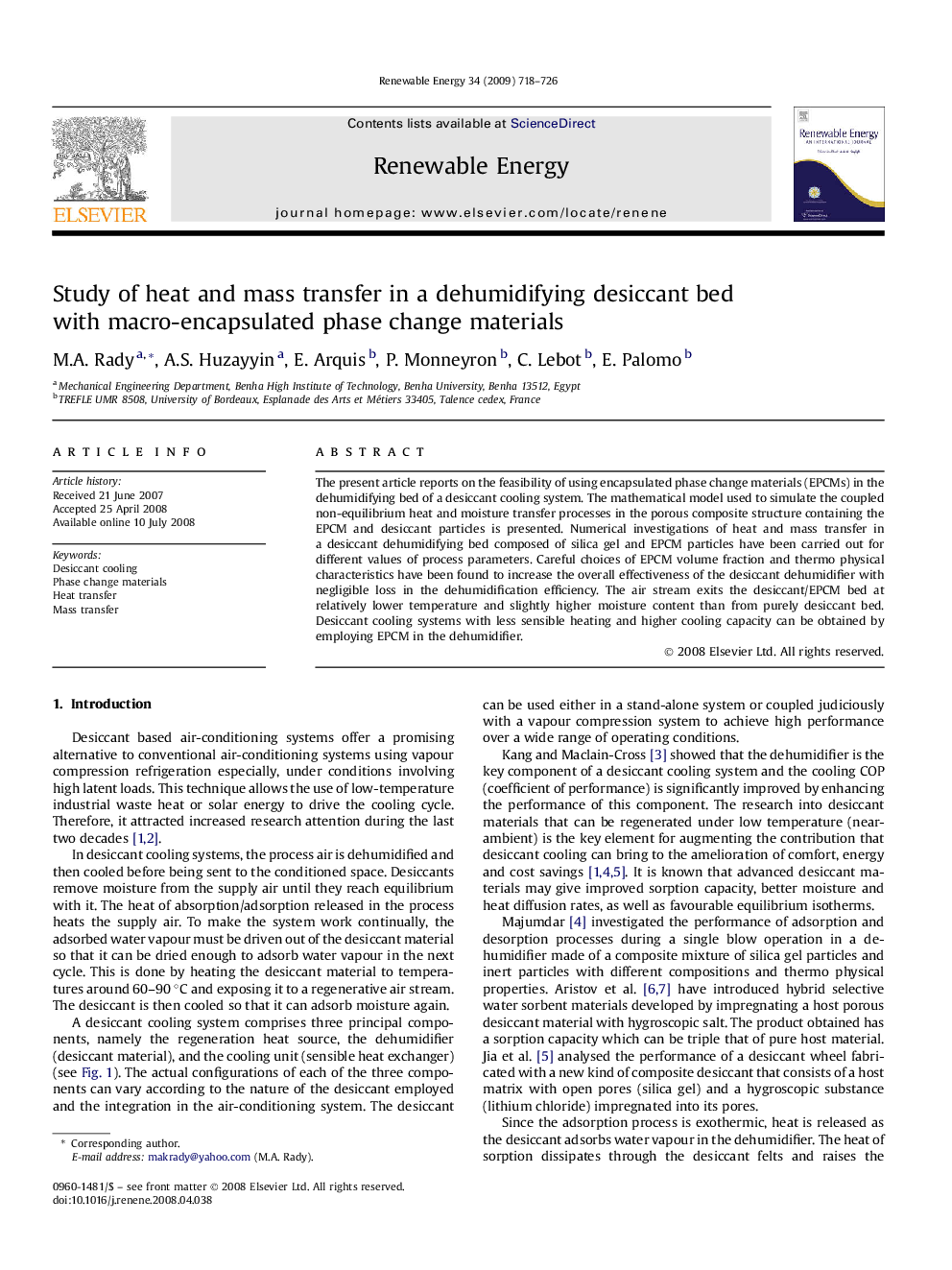| Article ID | Journal | Published Year | Pages | File Type |
|---|---|---|---|---|
| 302447 | Renewable Energy | 2009 | 9 Pages |
The present article reports on the feasibility of using encapsulated phase change materials (EPCMs) in the dehumidifying bed of a desiccant cooling system. The mathematical model used to simulate the coupled non-equilibrium heat and moisture transfer processes in the porous composite structure containing the EPCM and desiccant particles is presented. Numerical investigations of heat and mass transfer in a desiccant dehumidifying bed composed of silica gel and EPCM particles have been carried out for different values of process parameters. Careful choices of EPCM volume fraction and thermo physical characteristics have been found to increase the overall effectiveness of the desiccant dehumidifier with negligible loss in the dehumidification efficiency. The air stream exits the desiccant/EPCM bed at relatively lower temperature and slightly higher moisture content than from purely desiccant bed. Desiccant cooling systems with less sensible heating and higher cooling capacity can be obtained by employing EPCM in the dehumidifier.
